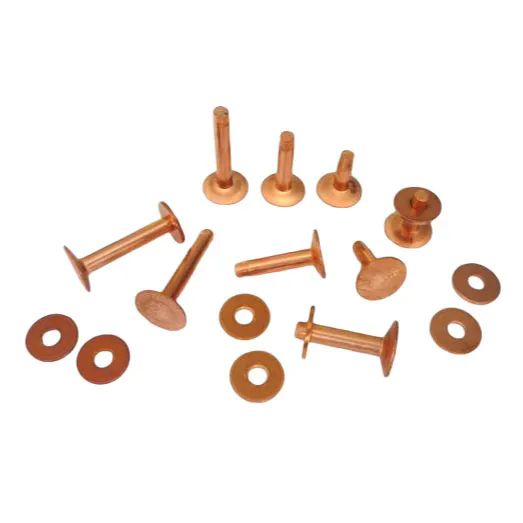The Benefits and Applications of Cold Formed Copper Parts
2024-08-02
Copper has long been valued for its excellent conductivity, durability, and resistance to corrosion. In recent years, cold forming techniques have become increasingly popular for manufacturing copper parts, offering numerous advantages in terms of precision, efficiency, and material properties. In this blog, we’ll explore what cold-formed copper parts are, the benefits of this manufacturing process, and the various applications where these components excel.
What Are Cold Formed Copper Parts?
Cold formed copper parts are components made from copper that are shaped and hardened through a cold forming process. Unlike traditional forging or casting methods, cold forming involves shaping the copper at room temperature or slightly above, without the need for heating the metal to high temperatures. This process is typically achieved using stamping, pressing, or rolling techniques.
Key Features of Cold Formed Copper Parts
1. High Precision: Cold forming allows for the production of parts with tight tolerances and high dimensional accuracy. This precision is crucial for applications where exact measurements and fits are required.
2. Enhanced Mechanical Properties: The cold forming process can improve the mechanical properties of copper, such as its tensile strength and hardness. This is due to the work-hardening effect that occurs during the deformation process.
3. Surface Finish: Cold formed copper parts often have a smooth surface finish with minimal defects, reducing the need for additional machining or finishing processes.
4. Material Efficiency: Cold forming generates minimal material waste compared to other manufacturing methods. The process is designed to use the raw material efficiently, leading to cost savings and reduced environmental impact.
5. Complex Shapes: The cold forming process can produce intricate and complex shapes that would be difficult or expensive to achieve with other methods. This flexibility allows for innovative designs and functional components.
Benefits of Cold Forming Copper Parts
1. Cost-Effective Production: Cold forming is generally more cost-effective than other manufacturing methods, such as casting or machining, especially for high-volume production. The reduced need for secondary operations further contributes to cost savings.
2. Improved Strength and Durability: Cold forming enhances the strength and durability of copper parts due to the work-hardening effect. This makes cold formed copper parts suitable for demanding applications where high mechanical performance is required.
3. Faster Production Rates: The cold forming process allows for rapid production of parts, which is beneficial for meeting tight deadlines and high-volume orders.
4. Consistent Quality: The cold forming process produces parts with consistent quality and uniformity, reducing variability and ensuring reliable performance.
5. Reduced Energy Consumption: Unlike hot forming methods, cold forming does not require heating of the metal, leading to lower energy consumption and a more environmentally friendly manufacturing process.
Applications of Cold Formed Copper Parts
1. Electronics and Electrical Components: Cold formed copper parts are widely used in electronics and electrical components, such as connectors, terminals, and contacts. Their excellent conductivity and precision make them ideal for ensuring reliable electrical connections.
2. Automotive Industry: In the automotive sector, cold formed copper parts are used in various applications, including electrical systems, connectors, and heat exchangers. Their durability and performance are essential for automotive reliability and efficiency.
3. Aerospace: Cold formed copper components are utilized in aerospace applications where high strength-to-weight ratios and precise tolerances are critical. These parts can be found in avionics, sensors, and other high-performance aerospace systems.
4. Industrial Machinery: Cold formed copper parts are used in industrial machinery and equipment for their durability and ability to withstand harsh operating conditions. Applications include bearings, bushings, and various mechanical components.
5. Telecommunications: The telecommunications industry benefits from cold formed copper parts in the form of connectors, shields, and other components that require high conductivity and reliability for data transmission.
6. Renewable Energy: Cold formed copper components are used in renewable energy systems, such as solar panels and wind turbines, where their excellent electrical conductivity and resistance to environmental factors are advantageous.
Conclusion
Cold formed copper parts represent a versatile and efficient solution for a wide range of applications. The benefits of this manufacturing process—including precision, strength, cost-effectiveness, and reduced environmental impact—make it an attractive choice for industries ranging from electronics and automotive to aerospace and renewable energy.
By leveraging the advantages of cold forming, manufacturers can produce high-quality copper components that meet stringent performance requirements and contribute to the success of various applications. Embrace the potential of cold formed copper parts and discover how they can enhance your projects and products with their exceptional properties and capabilities.



